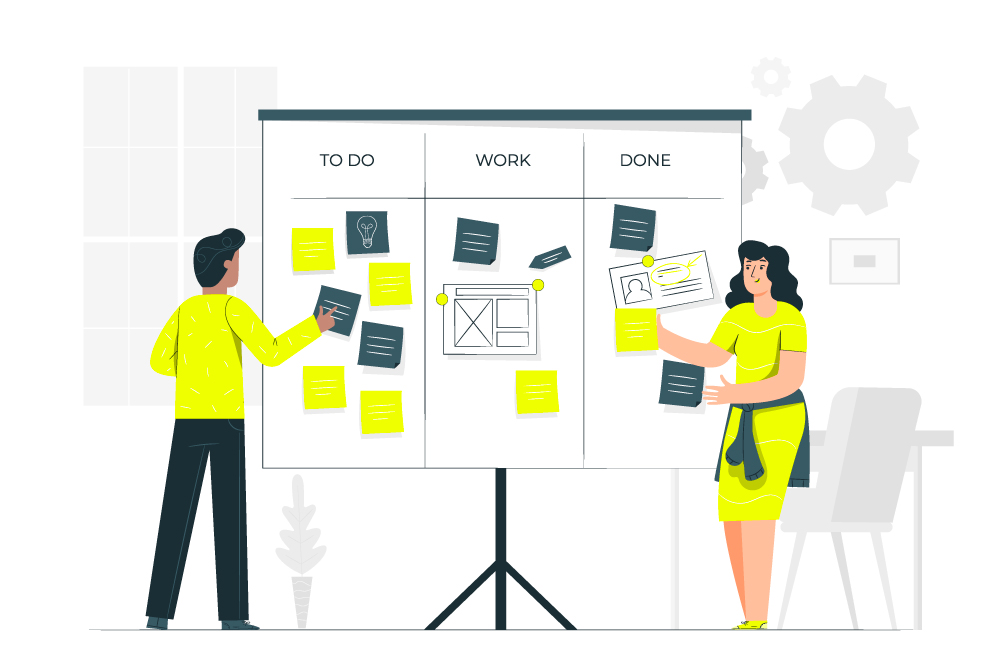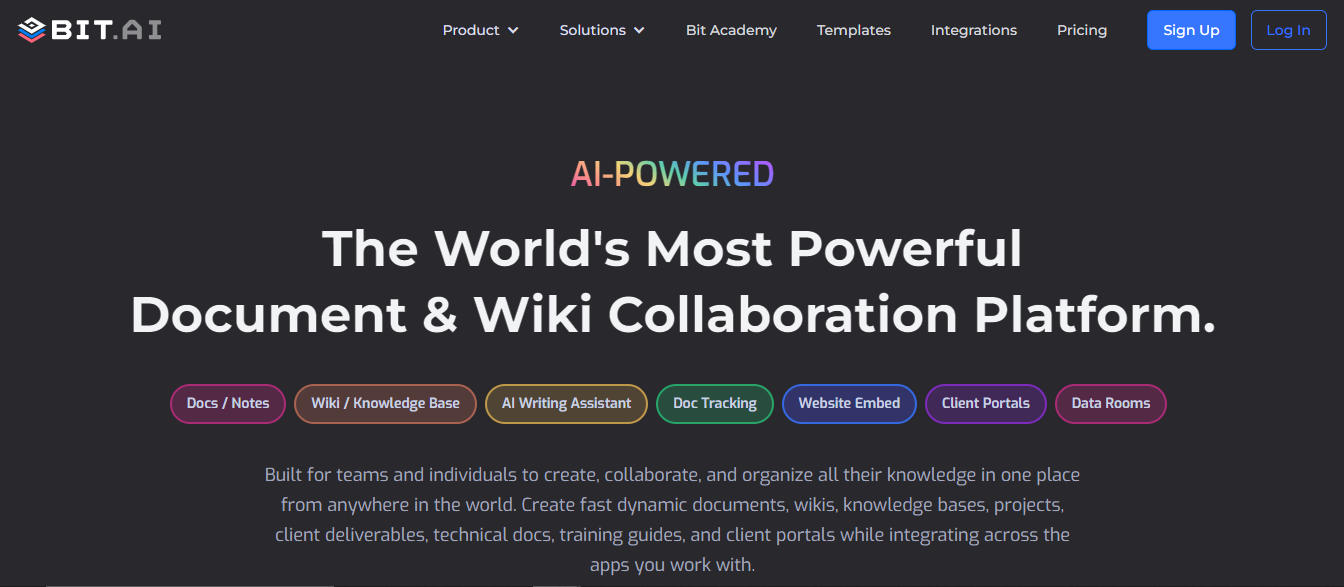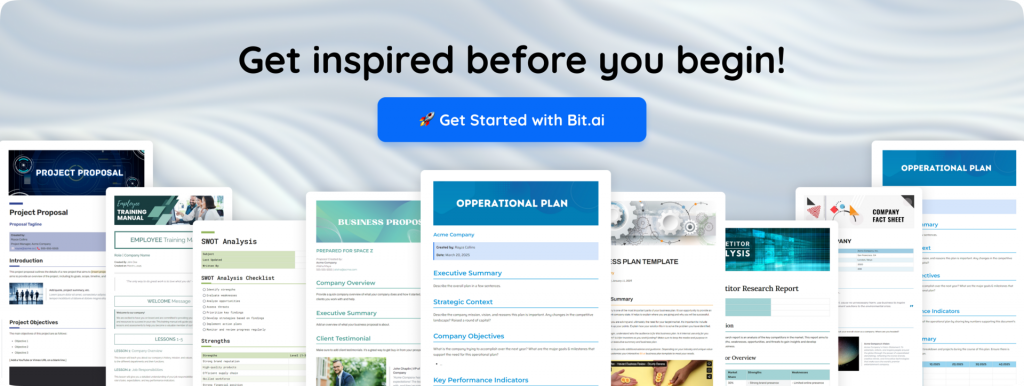“A goal without a plan is just a wish.”
In any business, you may have multiple operations running at any given time.
It’s necessary to stay on track with all these operations and the management of a firm plays a pivotal role in making sure they are carried out smoothly.
Managers need to be two steps ahead and prepare for any possible threats and anticipate upcoming changes.
For this a management plan needs to be in place, without it, you become vulnerable to changing trends that can threaten our business.
Management plans will help address a variety of issues, not just during the initial phases of an operation but throughout its execution.
Simply put, a management plan ensures that everything operates smoothly.
The good news is that setting up a management plan will help you optimize all your processes.
The bad news? Creating a management plan usually trips most managers. But that’s why we’re here to not let you fall into the same traps that most managers get themselves into.
Read on and soon you’ll become a management plan expert…
What is a Management Plan? (Definition)
A management plan is a comprehensive plan that provides the objectives of any given project, clearly defines roles and responsibilities, and more to make sure it’s a success!
Your management plan is a resource that everyone in the firm can use for better guidance.

It is a blueprint for the way your organization runs, both day-to-day and over the long term.
A management plan generally outlines:
- the aims and objectives of a firm — what are we trying to achieve?
- the strategies used to meet the objectives — how will we achieve it?
- the methods used to measure performance — how will we know if we are achieving it?
No matter the size of your organization, the core intent of your management plan will be to ensure that the organization is running as effectively as possible.
Let’s dive a little deeper and get to know management plans better…
Benefits of Creating a Management Plan
To make sure that an organization is working smoothly, a lot of processes need to be handled simultaneously.
If you leave everything for the last minute, hoping that it all works out when the problems arise, you’d be in deep waters.
So to keep up with daily tasks, manage emergencies as they arise, and to not let projects slip through, you need a management plan.
There are a lot of benefits of having a management plan in place, some of them are:
1. Defines roles and responsibilities
Employees need to know who their reporting managers are, who they should consult and go to in case of any need of information. They also need to be aware of the limits of their work, when they need a sign-off from some authority, and when they don’t. All of this can be easily done with the use of a management plan.
2. Allocates Tasks
A management plan also divides the work within an organization in reasonable and feasible ways, so that everyone is not only achieving their goals but also doing them in a way that doesn’t burn them out.
3. Increases accountability
When tasks and duties are determined, people can be easily accounted for. If daily tasks are not being attained within the allocated time, then the internal team is failing whereas if the CSR activities are not being conducted, then it’s the management who’s failing.
Read more: 13 Types of Plans Your Business Must Have!
4. Creates an effective timeline
A management plan creates a timeline that ensures that bills are being paid on time, staff members are where they’re supposed to be to provide the organization’s services, funding proposals get written and submitted, problems are quickly dealt with, and as a result, the organization functions effectively.
5. It helps the organization define itself
The management plan establishes a solid plan that aligns with the organization’s mission and philosophy. This helps the organization to never forget about its core beliefs and communicate this with clarity to its staff, its customers, and the community as a whole.
How to Create a Management Plan in Easy Steps?
In this guide, we’ll walk you through the step-by-step process of crafting a powerful management plan. We’ll cover everything from setting clear goals and outlining tasks to building a strong team and navigating challenges. By the end, you’ll be equipped with the tools and knowledge to confidently take charge and turn your ideas into reality.
Step 1. Define the Objective
Think of a management plan as a roadmap for your project. Just like any good trip, you need to know exactly where you’re headed before you start the engine. This first step focuses on pinning down what you want to achieve. Here’s how to get there:
- Identify the Goal: What do you want to accomplish overall? Are you launching a new product line, revamping customer service procedures, or boosting sales in a specific area? Keep it clear and simple.
- Make it SMART:
- Specific: Instead of “improve sales,” aim for something like “increase online sales by 15% in the next three months.”
- Measurable: How will you track progress? Numbers are key here!
- Attainable: Be ambitious but realistic. A sudden 1000% sales jump might not be feasible.
- Relevant: Does this objective align with your bigger goals?
- Time-Bound: Set a deadline for achieving your objective.
Example: Imagine you run a bakery and want to sell more cupcakes. Here’s an un-SMART objective: “Sell more cupcakes.” Here’s a SMART objective: “Increase in-store cupcake sales by 20% within the next 3 months through a weekly ‘flavor of the week’ promotion.”

Pro Tip: Get your team involved! Discussing the objective with them can help you refine it and ensure everyone’s on the same page.
Step 2. Conduct a SWOT Analysis
Now that you know your destination (your objective!), it’s time to assess the road ahead. A SWOT analysis is a tool that helps you identify your project’s strengths, weaknesses, opportunities, and threats (SWOT). Here’s how to conduct a SWOT analysis:
- Gather Your Team: This isn’t a one-person job! Get a diverse group of people involved who can offer different perspectives on your project.
- Brainstorm!: List down everything that comes to mind for each category of the SWOT analysis:
- Strengths: What are your project’s advantages? This could be a skilled team, a strong brand reputation, or access to unique resources.
- Weaknesses: What are your project’s limitations? Maybe you have a limited budget, a tight deadline, or a lack of expertise in a certain area.
- Opportunities: What external factors could benefit your project? Think about new market trends, potential partnerships, or upcoming events.
- Threats: What external challenges could hinder your project? This could be competition, economic changes, or even new regulations.
- Be Honest and Specific: Don’t sugarcoat your weaknesses or downplay threats. The more realistic your assessment, the better prepared you’ll be.
- Analyze and Prioritize: Once you have a good list, take a step back and analyze how each factor might impact your project. Is a strength strong enough to overcome a weakness? Can an opportunity be leveraged to minimize a threat? Rank the factors based on their potential impact.
Example: Let’s say your bakery is launching a new line of vegan cupcakes. Here’s a possible SWOT analysis:
- Strengths: Experienced bakers, loyal customer base, reputation for high-quality ingredients.
- Weaknesses: Limited experience with vegan baking, smaller profit margins on vegan products.
- Opportunities: Growing demand for vegan treats, potential partnerships with vegan food bloggers.
- Threats: Competition from established vegan bakeries, potential for higher ingredient costs.
Step 3. Identify Resources
This step is all about figuring out what you’ll need to complete your plan, like gathering supplies for a project. Here’s how to identify the resources needed for your management plan:
- Break Down the Work: Take your project and divide it into smaller, more manageable tasks. For each task, ask yourself a simple question: What tools or people do I need to get this done?
- Resource Categories: Resources can be grouped into four main categories:
- People: Who on your team has the skills and experience to complete each task? Do you need to hire anyone outside the team (contractors, freelancers)?
- Materials: What physical items do you need? This could be anything from office supplies to raw materials for production.
- Equipment: Do you need any special tools, software, or machinery to complete the project?
- Budget: How much money is allocated for this project? This will affect what resources you can realistically get.
- Consider Everything: Don’t forget even minor things. Do you need access to a printer or specific software licenses? Include these in your list.
- Availability Matters: Make sure the people and resources you need are available throughout your project timeline. Don’t schedule a task requiring a specific software if it’s already booked solid for another project during that time.
- Look for Alternatives: If a key resource isn’t available, brainstorm other options. Can you use a different tool or software? Can someone else on the team step up with the necessary skills?
Example: Imagine your bakery is launching the “flavor of the week” cupcake promotion. Here are some resources you might need:
- People: Bakers, decorators, marketing team members
- Materials: Cupcake ingredients, frosting, packaging materials
- Equipment: Ovens, mixers, piping bags
- Budget: Funds for ingredients, packaging, and potentially marketing materials
Knowing your resources upfront helps avoid roadblocks later on. By identifying everything you need, you can ensure your project runs smoothly and achieves its goals.
Read more: Management Report: What is it & How to Create it?
Step 4. Assign Roles and Responsibilities
Assigning clear roles and responsibilities is like creating a team playbook for your project. It ensures everyone knows exactly what they need to do, avoiding confusion and missed deadlines.

1.Gather all the tasks: Start by identifying all the smaller tasks that need to be completed to finish the entire picture. This could involve brainstorming sessions with your team or reviewing project goals.
- Match Skills with Tasks: Now that you have a list of tasks, think about your team members. Who has the skills and experience to handle each task effectively? For example, if you need a report written, assigning it to someone with strong writing skills makes perfect sense.
- Delegate and Define: It’s time to assign each task to a specific team member. Be clear about what’s expected. This includes:
- The specific task: What exactly does this person need to do?
- Deliverables: What is the final output of this task (e.g., a completed report, a finished design)?
- Deadlines: When does this task need to be finished?
- Decision-Making Authority: Will team members be able to make small decisions related to their tasks, or will they need to come to you for everything? Setting clear expectations about decision-making empowers your team and avoids bottlenecks.
Step 5. Develop a Timeline
So you’ve figured out your goals, your resources, and your approach (whew!). Now it’s time to turn that into action with a timeline. This is basically a roadmap that shows when each part of your plan will happen. Here’s how to build one:
- Break Down the Big Stuff: Remember those big goals you identified? Now it’s time to chop them into smaller, more manageable tasks. Think of these tasks as the building blocks of your project. For example, if your goal is to launch a new product, some tasks might be designing the product, finalizing the packaging, and running marketing campaigns.
- Identify Dependencies: Not all tasks can happen at once. Some tasks depend on others being completed first. For instance, you can’t launch a marketing campaign until you have product packaging finalized. Figure out which tasks rely on others being finished and write them down in the order they need to be completed.
- Estimate Timeframes: Be realistic! How long will each task take? Consider things like team member availability, workload, and any potential roadblocks. Don’t be afraid to ask your team for their input on how long specific tasks might take them.
Step 6. Implement the Plan
Your plan is ready! Now for the fun part – making it happen. Here’s how to get started:
- Stay on Track: Use a calendar or to-do list app to keep yourself on schedule.
- Talk it Out: If you’re stuck or need help, discuss it with your team (or a friend if you’re solo). Talking it through can spark new ideas.
- Keep an Eye on It: Check in with your plan regularly. Are you on track? Need to adjust anything?
Celebrate small wins! Finishing a task gives you a sense of accomplishment and keeps you motivated.
Step 7. Monitor and Evaluate
You’ve planned, delegated, and set the wheels in motion. But how do you know if your management plan is actually working? This is where monitoring and evaluation come in. Here’s how to turn them into a winning strategy:
- Measure It: Use numbers (sales figures) or descriptions (communication clear?) to see if you’re on track.
- Check In Regularly: Weekly meetings, monthly reports – how often depends on your plan.
- Gather Info: Reviews, surveys, or team updates will tell you how things are going.
- Fix It Fast: Data shows a problem? Adjust your plan to get back on course.
- Share & Celebrate: Keep everyone informed and acknowledge successes to keep motivation high.
As your project unfolds, your plan might need tweaks. By regularly checking in and adapting, you’ll ensure your management plan stays on course and helps you reach your goals.

Creating a management plan without an intuitive and robust tool can be overbearing on any person.
Gone are the days of boring management plans, today we want something enticing and informative. How can you do that?
Bit.ai is the answer! Let us tell you more…
Create Your Management Plan The Right Way With Bit.ai
Bit.ai is a new age online document collaboration tool that helps anyone create an awesome management plan or any other document, in minutes.

Bit is the dream tool to help teams transform the documenting process, by making it interactive and collaborative.
Take a look at some of the many wonderful Bit features:
Real-Time Collaboration: When working on a document as comprehensive as a management plan, it’s obvious that you’ll be working with a team. At such times, it’s more important than ever to have a seamless collaboration experience! Bit facilitates exactly that with its real-time collaboration feature that lets you work on the same document together, comment to exchange ideas and chat on the side.
Smart Workspaces: On Bit.ai, you can create as many workspaces as you want around different teams and communicate in a much better way. For example, once the management plan is created, you can send the document to other owners for approval. And after their approval, you can send it to all the departments within a few clicks!
Media Integrations: No more hopping from one app to the other in search of information, Bit.ai integrates with over 100+ popular applications (YouTube, Typeform, LucidChart, Spotify, Google Drive, etc.) to help teams weave information in their management plan beyond just text and images.
Sleek Editor: Creating a management plan requires constant revisions and edits, with Bit’s minimal document editor, you can write your management plan without the distraction of unnecessary buttons and tabs. And given its simple design, you won’t have to spend hours creating your report.
Sharing: Bit documents can be shared in a way that all changes that you make to the document will be updated in real-time. If you are sharing your management plan with anyone, they will always get your latest changes. Interesting right?
A plethora of features: With many intriguing templates, document tracking, cloud-upload, document locking, and a myriad of such features, BIt is an all-rounded tool for all your documentation needs!
Trust us, your data is secure here and your work will become more efficient than ever with Bit, and given its free plan, it’d be a shame not to give it a try!
Our team at bit.ai has created a few awesome business templates to make your business processes more efficient. Make sure to check them out before you go, your team might need them!
- SWOT Analysis Template
- Business Proposal Template
- Business Plan Template
- Competitor Research Template
- Project Proposal Template
- Company Fact Sheet
- Operational Plan Template
Conclusion
Effective management only comes after careful planning,
Your employees need to know how they can achieve the goals, the methods they need to use, and more for the smooth functioning of your projects.
Management plans offer that!
Having a management plan will shape your organization the way you want to and you’ll be able to improve your offerings too!
And trust us, there is no way around management plans, sooner or later you’ll realize their importance. With our tips and Bit by your side, you can create your management plans from scratch with precision and ease.
We suggest you get on with your management plan now and you’ll see the results they come bearing!
Have any queries? Tweet us @bit_docs and we’d love to hear from you and help you out with your management plan needs!
Further reads:
- Resource Management Plan: What is it & How to Create it?
- Mitigation Plan: What Is It & How To Create One?
- Implementation Plan: What is it & How to Create it? (Steps & Process)
- Business Development Plan: What is it & How to Create a Perfect One?
- Process Improvement Plan: What is it & How to Create It? (Steps Included)




